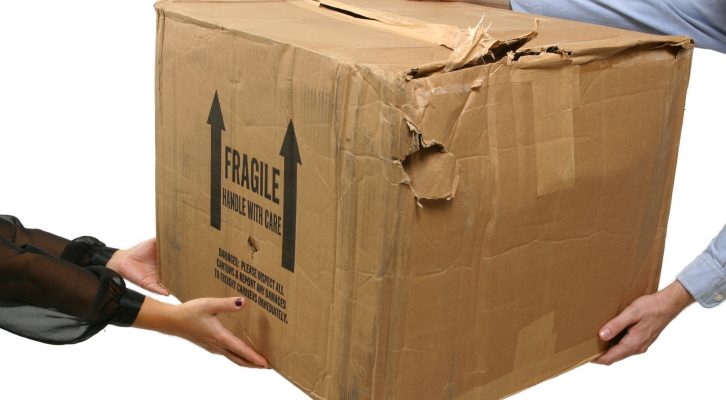Here’s a dirty little secret about the protective packaging business. If the packaging doesn’t hold up well and an item packed inside arrives damaged, the packaging company is unlikely to be on the receiving end of an angry phone call.
The consumer is unlikely to go digging for the 1-800 number of the company who made the box. They’re going to complain to the retailer who sent them the box.
Every delivery is a tangible touchpoint consumers have with your brand, but that experience doesn’t end on the doorstep. In fact that’s just the beginning.
So how do you make sure that the experience your customers have receiving, opening, reusing, recycling, or returning the packages you provide is a positive one?
Here are the three big, costly packaging mistakes companies make in every industry in every region around the world:
Mistake # 1. Neglecting return logistics
We all know that sometimes consumers have to return what they’ve ordered. But just as a consumer’s expectations for fast, free delivery have risen exponentially over the last five years, so too have expectations for how easy it should be to return that item.
In fact, 94% of consumers say they strongly prefer to do returns using the original packaging.
Best case scenario: a pre-paid return shipping label is in their package, they can slap it on, and drop it at the nearest pickup location.
That’s working pretty well. Consumers are pretty happy with that. But there’s a big difference between pretty happy and downright delighted. The customer experience isn’t over when your package is delivered. Not even if you went to the trouble of putting the return label inside. Every return is another point of engagement with your customer. It should reflect the same focus and attention to detail as every other part of that experience.
Mistake #2. Overpacking (too much packaging)
When you think of overpacking you’re probably thinking about an explosion of excessive foam peanuts—that’s a consumer nightmare.
But more often today, overpacking looks like piles and piles of boxes, a nest of excessive air pillows, or a tiny item swimming inside an oversized container. That’s a customer turnoff—77% of consumers think packaging should and does reflect the environmental values of the business they purchased from.
Consumers know waste when they see it, and it reflects negatively on their perception of your business—and not just when it comes to the perception of sustainability. When an order arrives in multiple, unnecessarily large boxes, consumers see inefficiency. Consumers’ top three pet peeves when it comes to packaging are bothersome disposal, mess and recycling difficulties. So, while sending too much packaging to their homes might protect the items they ordered, it also tells them you haven’t considered who has to do the dirty work and get rid of all that wasteful material.
Wasteful packaging practices already cost you more money in materials and freight costs, and they could be costing you long-term loyal customers.
Mistake #3. Underprotecting
Getting a piece of clothing in the mail and deciding you don’t like it? Minor inconvenience—as long as the retailer doesn’t neglect the importance of effortless return logistics.
Buying an expensive high-definition, flat screen TV online and having it arrive cracked down the middle—that’s a nightmare. (We were shocked to learn about 35% of flat screen TVs are bought through e-commerce channels.)
This shows there are no barriers anymore as to what can be bought online. If a consumer wants it, chances are it can be purchased and shipped to their home. This means a lot of fragile, heavy, and oddly-shaped items and are now being put through a delivery chain that wasn’t designed to handle them, and in packaging solutions that weren’t designed to fit them.
The result: damage, damage, and damage
Reducing that rate of damage is not just a customer experience imperative—it’s also a sustainability imperative.
There is no amount of recyclable, biodegradable, reusable packaging that can wipe out the carbon footprint of a damaged item.
Damaged items have to get back on a truck or plane and go back to their origin point where they are rebuilt, repaired, restocked, re-handled, or sometimes just relegated to the landfill.
Then comes reshipping, with that item making another journey through the supply chain, in another box filled with packing materials.
If you want to be a more sustainable company, reducing damage is the MOST impactful thing you can do—for your business and your bottom line.
It’s not too late for you to avoid these common packaging mistakes. You need to rethink the experience your customers have with your packaging, before they rethink the experience they have with you.
If you’re looking for packaging, check out these options on Alibaba.com
This post is adapted from “Top Packaging Mistakes All Brands and Retailers Should Avoid” by Ken Chrisman, and originally appeared on SmallBizDaily.com.
Ken Chrisman is president of the product care division and corporate vice president at Sealed Air Corporation. Sealed Air is a Fortune 500 company and a leading global innovator and manufacturer of a wide range of packaging and performance-based materials and systems that serve an array of food, industrial, medical, and consumer applications.



Follow Us